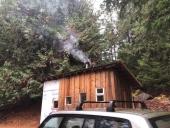




 7
7








 3
3















 3
3




 8
8




regards, Peter

 3
3




 5
5




“The most important decision we make is whether we believe we live in a friendly or hostile universe.”― Albert Einstein
 2
2






 4
4




 5
5




 6
6




“The most important decision we make is whether we believe we live in a friendly or hostile universe.”― Albert Einstein
 3
3





 8
8




For all your Montana Masonry Heater parts (also known as) Rocket Mass heater parts.
Visit me at
dragontechrmh.com Once you go brick you will never go back!
 2
2





|
That's my roommate. He's kinda weird, but he always pays his half of the rent. And he gave me this tiny ad:
Play Your Way to a Sustainable Lifestyle: Uncover Permaculture Principles with Each Card
https://gardener-gift.com/
|







